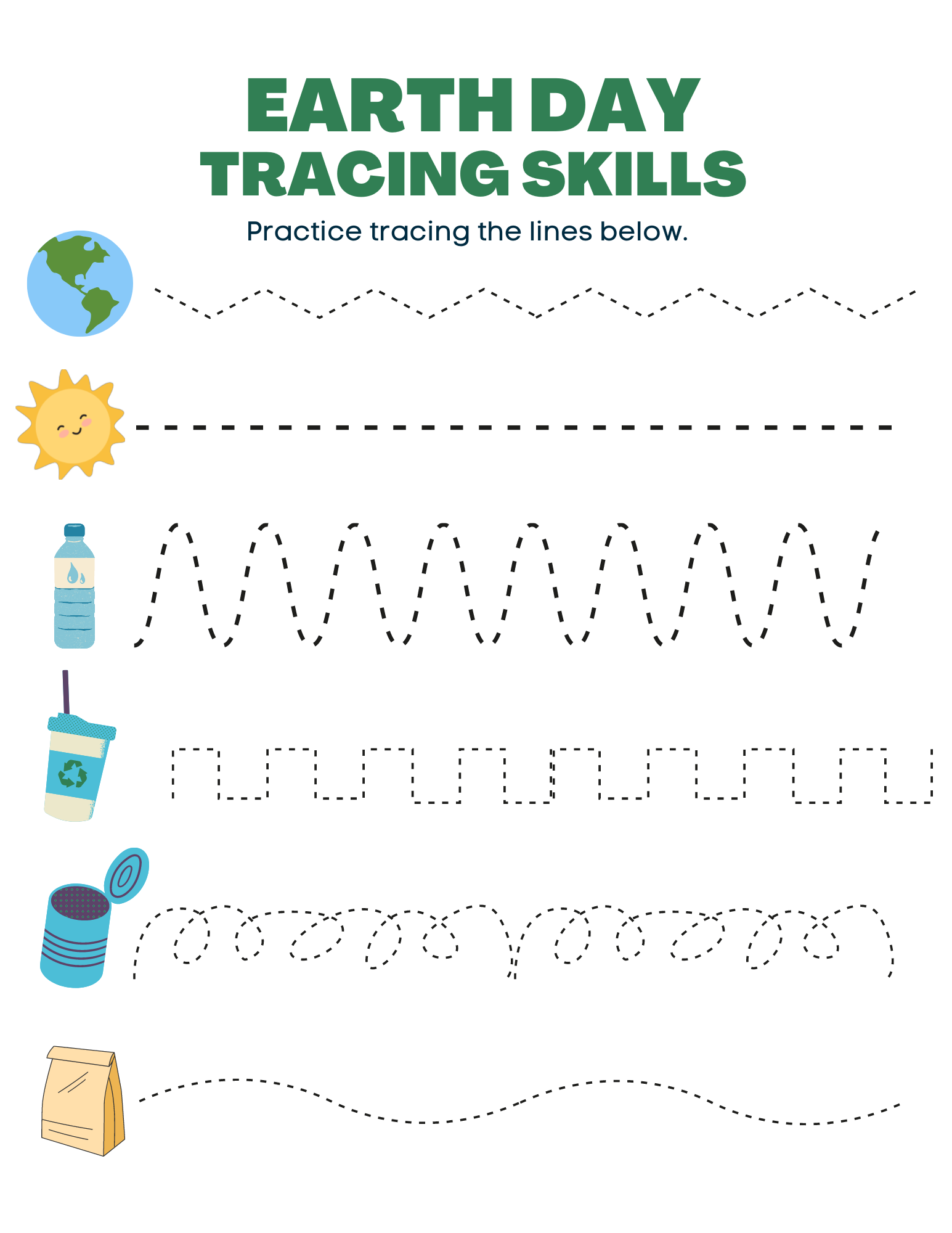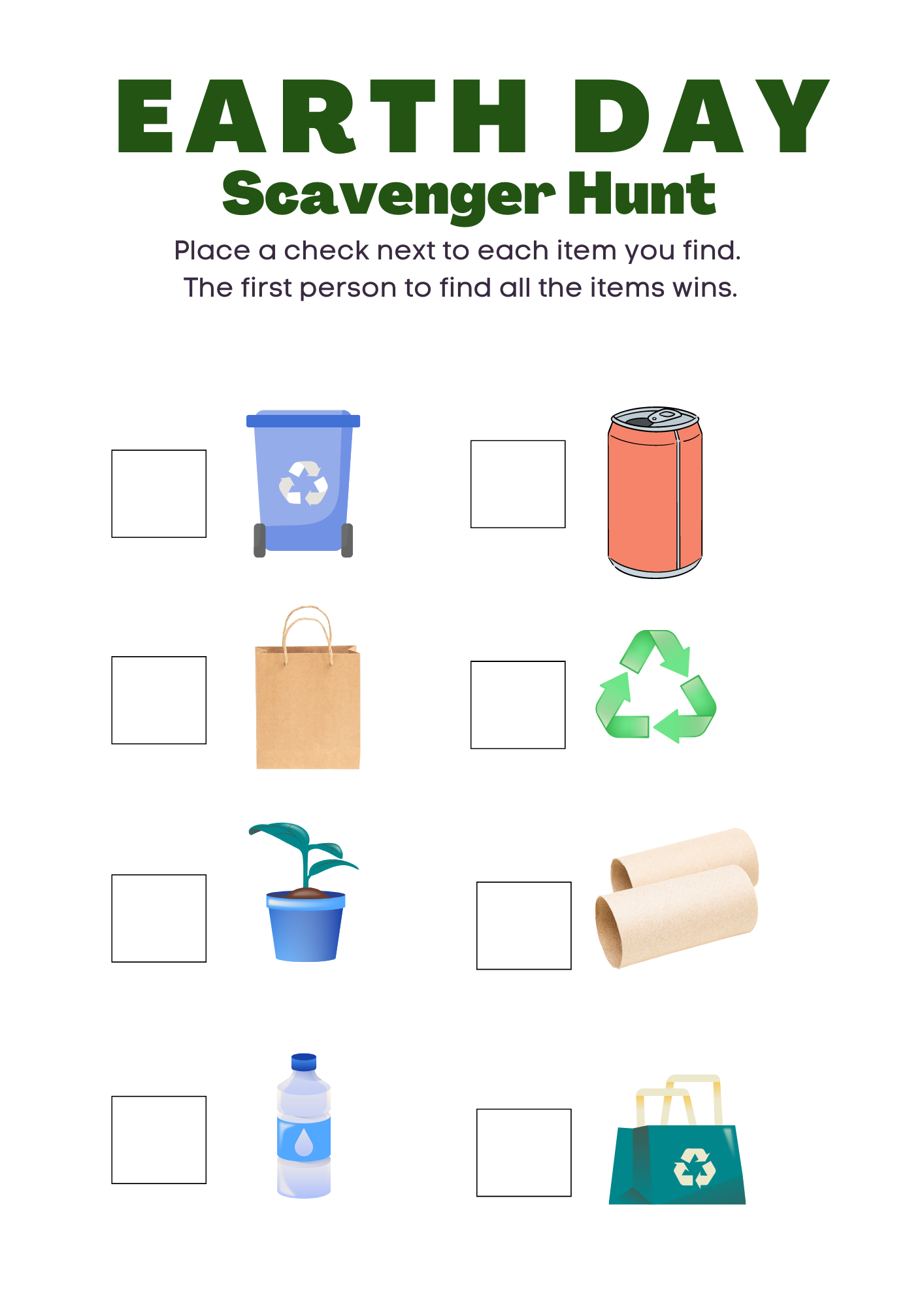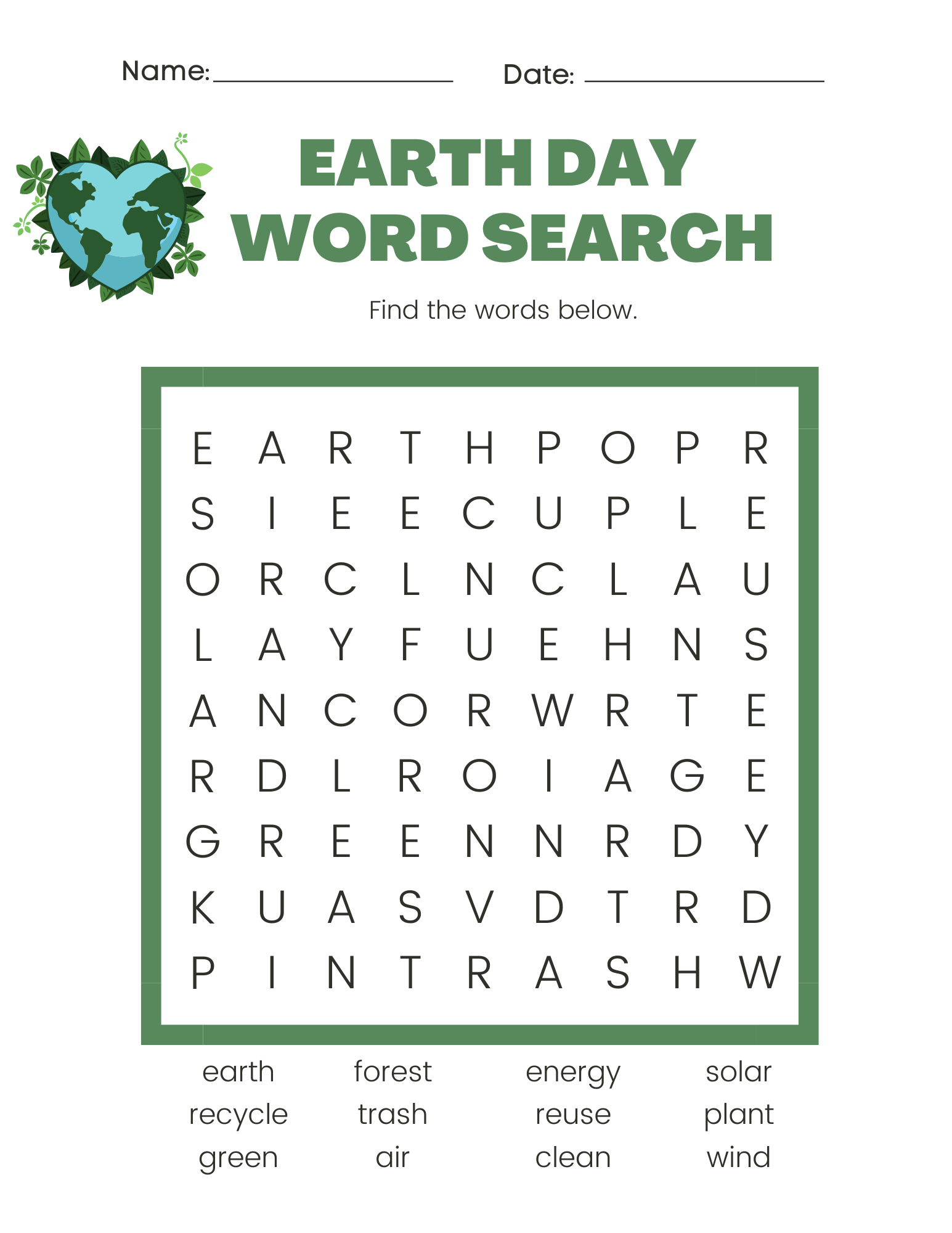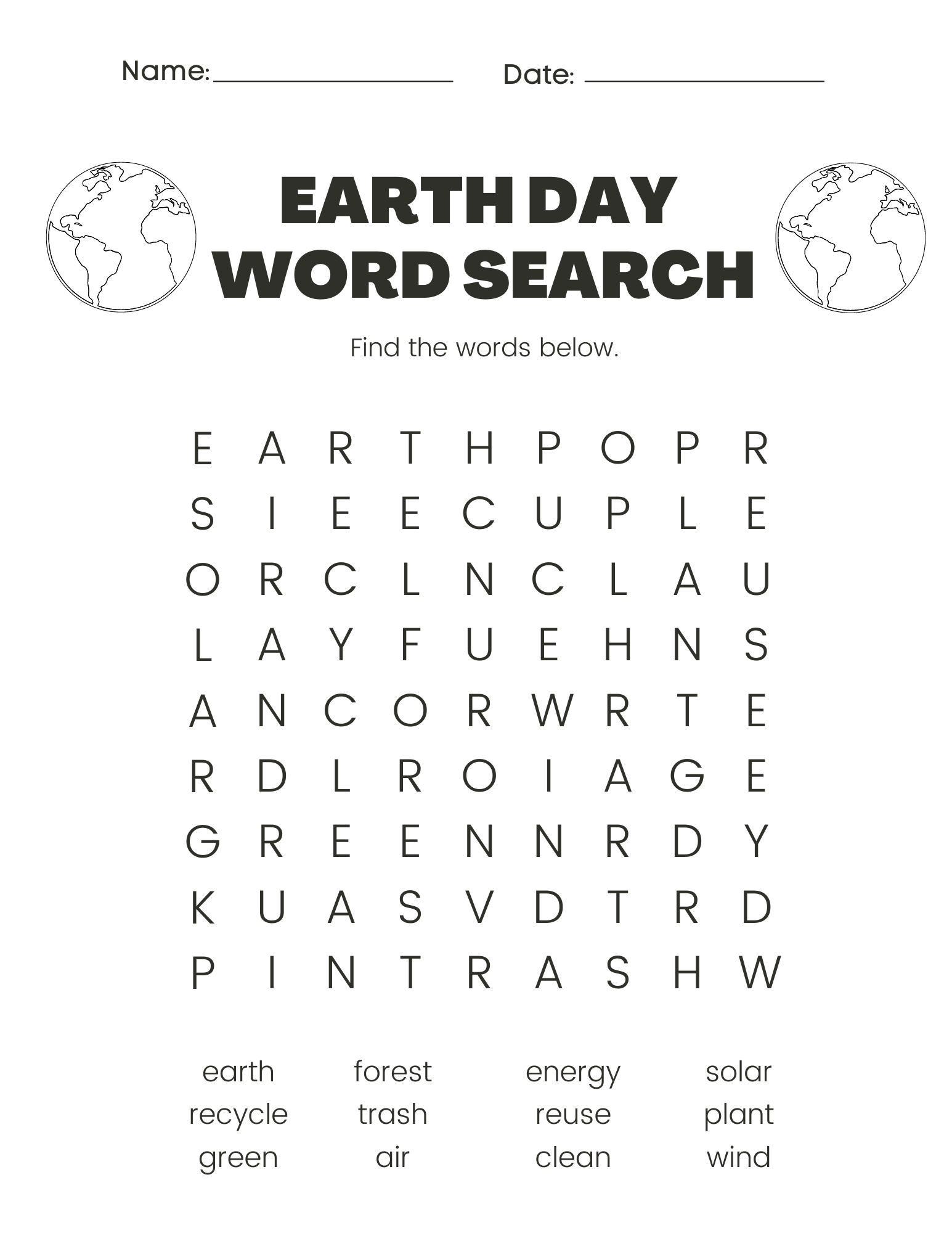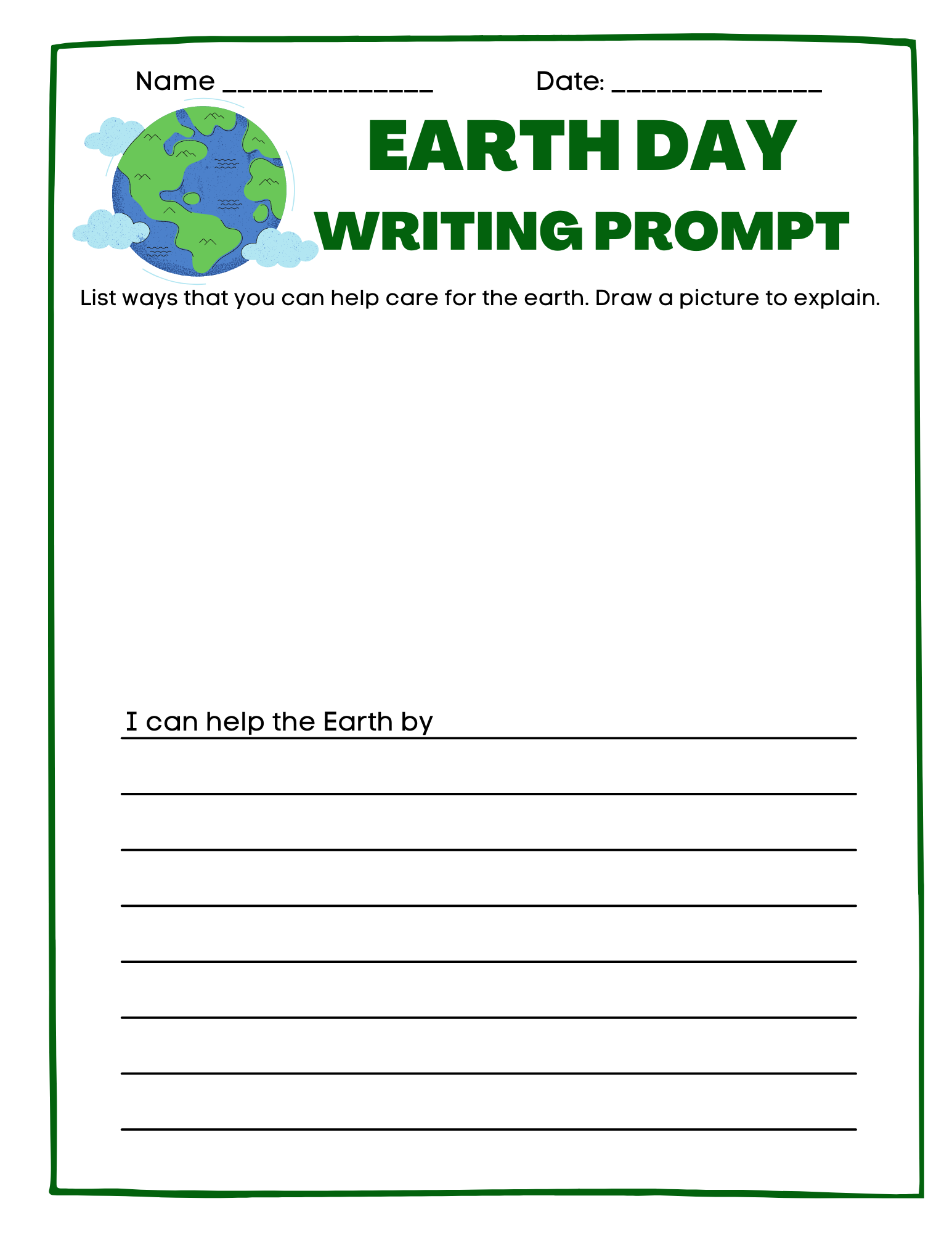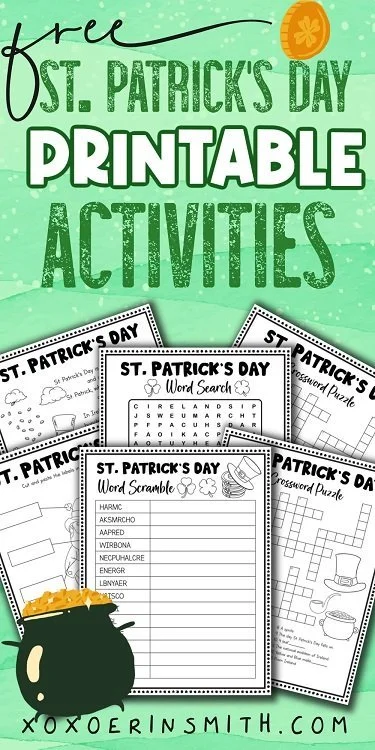8 Fun Earth Day Free Worksheets and Printables for Kids🌎
Welcome to our collection of Earth Day worksheets and printables for kids! Earth Day is a time to celebrate our planet and raise awareness about the importance of environmental conservation. These Earth day lessons and interactive worksheets are designed to engage children. These fun activities and educational Earth Day theme activities that promote sustainability, recycling, and caring for the Planet Earth.
Earth Day, April 22nd, is a time to reflect on our impact on the planet and commit to making positive changes for the future. By using these worksheets and printable packet, teachers can enhance classroom learning and parents can engage their children in meaningful conversations and activities that promote environmental awareness and conservation. Together, we can work towards a healthier, more sustainable planet for generations to come. Happy Earth Day with these free earth day activities for students of all ages!
8 Fun and Informative FREE Earth Day Printables
The free Earth Day worksheets include lesson plans and hours of learning fun. These pdf file free printables are easy to print and save and use for personal use, homeschool coop, and school environments.
Earth Day Tracing Skills FREE Worksheet
Lesson Plan Outline: Earth Day Celebration Tracing Skills Worksheet
Objective:
To develop fine motor skills and hand-eye coordination through tracing printable activities.
To introduce concepts related to Earth Day and environmental conservation.
Age Group:
Preschool and Kindergarten (3-5 years old)
Materials Needed:
Earth Day tracing skills worksheets (printed copies)
Crayons or colored pencils
Pencils
Scissors (optional)
Glue (optional)
Duration:
Approximately 30-45 minutes
Lesson Plan:
Introduction (5 minutes):
Begin by discussing the importance of Earth Day and why it is celebrated.
Talk briefly about ways we can help the Earth, such as recycling, conserving water, and planting trees.
Activity 1: Tracing Shapes (10 minutes):
Distribute the Earth Day tracing skills worksheets to each student.
Explain the tracing activity: Students will trace the shapes related to Earth Day.
Demonstrate how to hold a pencil correctly and trace the shapes with smooth, controlled movements.
Encourage students to take their time and practice tracing each shape neatly.
Teachers can laminate these sheets and have students use dry erase markers and reuse this free printable earth day sheet for years to come.
I love tracing worksheets for preschoolers and Kindergarten students because it is a fun way to work on hand eye coordination. If you plan on using these Earth Day Tracing worksheets repeatedly self laminate them and allow kids and students to use over and over! Older children can create fun games where they try to see who can finish the lines first with the least amount of errors! Toddlers and preschoolers can work on taking their time to stay on the dotted lines.
Earth Day Kids Recycling Worksheet
Lesson Plan: Earth Day Recycling Worksheet - What Can Be Recycled or Not
Objective:
To teach students about the importance of recycling and how to identify recyclable materials.
To raise awareness about the impact of recycling on environmental conservation.
Age Group:
Elementary School (1st grade - 3rd grade)
Materials Needed:
Earth Day recycling worksheet (printed copies)
Markers or colored pencils
Poster board or chart paper
Pictures or samples of recyclable and non-recyclable materials (optional)
Recycling bins (optional)
Duration:
Approximately 45-60 minutes
Lesson Plan:
Introduction (10 minutes):
Begin by discussing Earth Day and why it is important to celebrate and protect our planet.
Introduce the concept of recycling and explain that recycling helps reduce waste and conserve natural resources.
Ask students if they know what kinds of materials can be recycled and what cannot.
Activity 1: Sorting Recyclable and Non-Recyclable Materials (15 minutes):
Distribute the Earth Day recycling worksheets to each student.
Explain that students will be sorting different types of materials into categories of recyclable and non-recyclable.
Encourage students to carefully examine each item on the worksheet and color or mark the appropriate category for each.
Activity 2: Group Discussion (15 minutes):
After completing the worksheet, lead a group discussion about the items students identified as recyclable and non-recyclable.
Show pictures or samples of recyclable and non-recyclable materials to reinforce understanding.
Discuss why certain materials can or cannot be recycled and the importance of making the right choices when disposing of waste.
Activity 3: Create a Recycling Chart (15 minutes):
Divide students into small groups or pairs.
Provide poster board or chart paper and markers.
Instruct each group to create a recycling chart listing common items found at home or school and whether they are recyclable or not.
Encourage creativity and collaboration as students work together to design their charts.
Have each group present their recycling chart to the class and discuss any differences or similarities among them.
Conclusion (5 minutes):
Summarize the key points of the lesson, emphasizing the importance of recycling for protecting the environment.
Remind students to continue practicing recycling habits at home and school.
Encourage students to share what they've learned about recycling with their families and friends.
Extension Activity (Optional):
Take students on a recycling scavenger hunt around the school or local community to identify recycling bins and learn about the recycling process firsthand.
By engaging elementary school students in activities that teach them about recycling and the importance of making environmentally conscious choices, this lesson plan helps foster a sense of responsibility for protecting the Earth and encourages sustainable practices for the future.
Earth Day Scavenger Hunt
Lesson Plan: Earth Day Scavenger Hunt
Objective:
To raise awareness about environmental conservation and Earth Day.
To encourage students to explore their surroundings and identify elements related to nature and sustainability.
To promote teamwork and problem-solving skills.
Age Group:
Elementary School (Grades 3-5)
Materials Needed:
Earth Day scavenger hunt checklist (printed copies)
Clipboards or hard surfaces for writing
Pencils or pens
Safety vests or badges for visibility (if conducting the scavenger hunt outdoors)
Prizes or rewards for participants (optional)
Duration:
Approximately 60-90 minutes
Lesson Plan:
Introduction (10 minutes):
Begin by discussing the importance of Earth Day and why it is celebrated around the world.
Explain that today, students will be participating in an Earth Day scavenger hunt to explore their environment and discover ways to help protect the planet.
Review the rules and safety guidelines for the scavenger hunt.
Activity 1: Preparing for the Scavenger Hunt (10 minutes):
Distribute the Earth Day scavenger hunt checklists to each student.
Review the items on the checklist and clarify any questions students may have.
Assign students to small groups or pairs, ensuring that each group has a copy of the checklist and writing materials.
Activity 2: Scavenger Hunt (30-45 minutes):
Lead students outside to begin the scavenger hunt, or if conducting indoors, designate specific areas for exploration.
Instruct students to work together to find and check off items on the scavenger hunt checklist.
Encourage students to observe their surroundings carefully and look for signs of nature, sustainability efforts, or environmental awareness.
Remind students to stay together as a group and follow safety guidelines throughout the scavenger hunt.
Activity 3: Group Discussion and Reflection (10 minutes):
After completing the scavenger hunt, gather students together to discuss their findings.
Ask each group to share what they discovered during the scavenger hunt and any interesting observations they made.
Facilitate a discussion about the importance of the items on the checklist and how they contribute to environmental conservation.
Encourage students to reflect on what they learned and how they can continue to make a positive impact on the planet.
Conclusion (10 minutes):
Congratulate students on completing the Earth Day scavenger hunt and thank them for their participation.
Review key takeaways from the activity and reinforce the importance of caring for the Earth.
Discuss ways students can incorporate sustainable practices into their daily lives, such as recycling, conserving energy, and reducing waste.
Optionally, distribute prizes or rewards to participants for their efforts.
Extension Activity (Optional):
Encourage students to create posters or presentations showcasing their Earth Day scavenger hunt experience and what they learned about environmental conservation. Display these materials in the classroom or school to raise awareness among peers and teachers.
By engaging elementary school students in an interactive scavenger hunt focused on Earth Day themes, this lesson plan encourages exploration, teamwork, and critical thinking while fostering a deeper understanding of environmental conservation and sustainability.
Earth Day Word Search Printable
Lesson Plan: Earth Day Word Search
Objective:
To introduce students to vocabulary related to Earth Day and environmental conservation.
To improve students' word recognition and spelling skills.
To engage students in a fun and educational activity for Earth Day.
Age Group:
Upper Elementary (Grades 4-6)
Materials Needed:
Earth Day word search puzzles (printed copies)
Pencils or pens
Answer key (optional)
Timer (optional)
Duration:
Approximately 30-45 minutes
Lesson Plan:
Introduction (5 minutes):
Begin by discussing the importance of Earth Day and why it is celebrated worldwide.
Explain that today, students will be completing a word search puzzle related to Earth Day vocabulary.
Activity 1: Distributing the Word Search Puzzles (5 minutes):
Distribute the Earth Day word search puzzles to each student.
Review the instructions for completing the word search: Students will search for Earth Day-related words hidden in the puzzle grid.
Encourage students to read through the list of words before starting the activity.
Activity 2: Completing the Word Search (20-30 minutes):
Allow students time to work independently on completing the word search puzzle.
Encourage students to search for words horizontally, vertically, and diagonally within the puzzle grid.
Circulate around the classroom to provide assistance and guidance as needed.
Optionally, set a timer to add a sense of challenge and urgency to the activity.
Activity 3: Reviewing Answers (5 minutes):
Once students have completed the word search puzzles, review the answers together as a class.
Ask students to take turns identifying and spelling each word found in the puzzle.
Use this opportunity to reinforce the meanings of the Earth Day vocabulary words and their significance in promoting environmental conservation.
Conclusion (5 minutes):
Congratulate students on completing the Earth Day word search puzzle.
Reinforce the importance of Earth Day and the role each individual can play in protecting the environment.
Encourage students to reflect on ways they can incorporate sustainable practices into their daily lives.
Optionally, distribute Earth Day-themed stickers or bookmarks as rewards for completing the word search puzzle.
Extension Activity (Optional):
Challenge students to create their own Earth Day word search puzzles using vocabulary words related to environmental conservation. They can exchange puzzles with classmates to solve, further reinforcing their understanding of Earth Day concepts.
By engaging upper elementary students in a word search activity focused on Earth Day vocabulary, this lesson plan provides an interactive and enjoyable way for students to learn about environmental conservation while also strengthening their language skills.
Earth Day Word Search Black and White Printable
This Earth Day Word Search is the same as the above Earth Day word search just in black and white for ease of printing!
Earth Day Word Scramble Printable
Earth Day word scrambles are a fun way for children to work on unscrambling common Earth Day words or Earth Day vocabulary words if you are working on this with a classroom! This Earth Day word scramble requires students to analyze and unscramble common Earth Day words like air, Earth, tree, clean, bottle, green, litter, planet, reuse and recycle.
Lesson Plan: Earth Day Word Scramble
Objective:
To introduce students to Earth Day-related vocabulary.
To improve students' spelling, vocabulary, and problem-solving skills.
To engage students in a fun and interactive activity for Earth Day.
Age Group:
Lower to Upper Elementary (Grades 2-5)
Materials Needed:
Earth Day word scramble worksheets (printed copies)
Pencils or pens
Whiteboard and markers (optional)
Timer (optional)
Duration:
Approximately 30-45 minutes
Lesson Plan:
Introduction (5 minutes):
Begin by discussing the significance of Earth Day and why it is celebrated globally.
Explain that today, students will be participating in a word scramble activity to learn Earth Day-related vocabulary words.
Activity 1: Distributing the Word Scramble Worksheets (5 minutes):
Distribute the Earth Day word scramble worksheets to each student.
Review the instructions for completing the word scramble: Students will unscramble the letters to form Earth Day-related words.
Encourage students to read through the list of words before starting the activity.
Activity 2: Completing the Word Scrambles (20-30 minutes):
Allow students time to work individually or in pairs to unscramble the letters and form the correct words.
Encourage students to use context clues and their knowledge of Earth Day vocabulary to solve the word scrambles.
Circulate around the classroom to provide assistance and guidance as needed.
Optionally, set a timer to add a sense of challenge and urgency to the activity.
Activity 3: Reviewing Answers (5 minutes):
Once students have completed the word scramble worksheets, review the answers together as a class.
Ask students to take turns sharing their answers and spelling out the correct words.
Use this opportunity to discuss the meanings of the Earth Day vocabulary words and their significance in promoting environmental awareness.
Conclusion (5 minutes):
Congratulate students on completing the Earth Day word scramble activity.
Reinforce the importance of Earth Day and the role each individual can play in protecting the environment.
Encourage students to reflect on ways they can contribute to environmental conservation in their daily lives.
Optionally, distribute Earth Day-themed stickers or bookmarks as rewards for participating in the word scramble activity.
Extension Activity (Optional):
Challenge students to create their own Earth Day word scramble puzzles using vocabulary words related to environmental conservation. They can exchange puzzles with classmates to solve, further reinforcing their understanding of Earth Day concepts.
By engaging elementary students in a word scramble activity focused on Earth Day vocabulary, this lesson plan provides an interactive and educational opportunity for students to learn about environmental conservation while also developing their language skills.
Earth Day Word Scramble Answer Key
Use this Earth Day Word Scramble answer key for the Earth Day Word Scramble worksheet.
Reduce Reuse Recycle Earth Day Worksheet
Lesson Plan: Sorting Reduce, Reuse, Recycle Colorful Worksheet
Objective:
To teach students the concepts of reducing, reusing, and recycling waste.
To help students identify items that can be reduced, reused, or recycled.
To encourage critical thinking and problem-solving skills related to waste management.
Age Group:
Lower to Upper Elementary (Grades 1-5)
Materials Needed:
Sorting Reduce, Reuse, Recycle worksheet (printed copies)
Markers or colored pencils
Poster board or chart paper
Pictures or samples of items for sorting (optional)
Recycling bins labeled "Reduce," "Reuse," and "Recycle" (optional)
Duration:
Approximately 45-60 minutes
Lesson Plan:
Introduction (10 minutes):
Begin by discussing the importance of reducing, reusing, and recycling waste to protect the environment.
Explain that today, students will be learning about these concepts through a sorting activity.
Review the definitions of reducing (using less), reusing (using again), and recycling (turning waste into new products).
Activity 1: Introducing the Sorting Worksheet (10 minutes):
Distribute the Sorting Reduce, Reuse, Recycle worksheets to each student.
Review the instructions for sorting the items into the categories of reduce, reuse, and recycle.
Encourage students to read through the list of items and think critically about where each item belongs.
Activity 2: Completing the Sorting Worksheet (20-30 minutes):
Allow students time to work individually or in pairs to sort the items on the worksheet into the appropriate categories.
Encourage students to use markers or colored pencils to color-code the items based on their category.
Circulate around the classroom to provide assistance and guidance as needed.
Optionally, provide pictures or samples of real-life items for students to sort as a hands-on extension of the activity.
Activity 3: Group Discussion and Reflection (10 minutes):
Once students have completed the sorting worksheets, gather them together for a group discussion.
Ask students to share their reasoning for sorting certain items into each category.
Facilitate a discussion about the importance of reducing waste, reusing items whenever possible, and recycling to conserve resources.
Encourage students to reflect on ways they can apply these concepts in their daily lives.
Conclusion (5 minutes):
Congratulate students on completing the sorting activity and gaining a better understanding of reducing, reusing, and recycling waste.
Reinforce the importance of being mindful of our consumption habits and making environmentally conscious choices.
Encourage students to continue practicing reduce, reuse, and recycle principles at home and at school.
Optionally, display the completed sorting worksheets or create a classroom poster showcasing the three categories for future reference.
Extension Activity (Optional):
Take students on a classroom scavenger hunt to identify items that can be reduced, reused, or recycled. Discuss their findings as a class and brainstorm additional ways to incorporate these practices into their daily routines.
By engaging elementary students in a sorting activity focused on reducing, reusing, and recycling waste, this lesson plan provides an interactive and hands-on approach to learning about environmental conservation and sustainable practices.
Earth Day Writing Prompt and Activity Printable
Lesson Plan: Earth Day Writing Prompt Worksheet
Objective:
To encourage students to think critically about environmental issues and solutions.
To develop students' writing skills through creative expression.
To promote awareness and appreciation of Earth Day and the importance of environmental conservation.
Age Group:
Upper Elementary to Middle School (Grades 4-8)
Materials Needed:
Earth Day writing prompt worksheet (printed copies)
Pencils or pens
Whiteboard and markers (optional)
Timer (optional)
Duration:
Approximately 45-60 minutes
Lesson Plan:
Introduction (10 minutes):
Begin by discussing the significance of Earth Day and why it is celebrated worldwide.
Brainstorm with students about environmental issues they are aware of and why it's important to address them.
Explain that today, students will be writing creatively in response to Earth Day-themed writing prompts.
Activity 1: Introducing the Writing Prompts (10 minutes):
Distribute the Earth Day writing prompt worksheets to each student.
Review the writing prompts together as a class, explaining that students will choose one prompt to respond to in their writing.
Encourage students to think about their personal experiences, opinions, and ideas related to each prompt.
Activity 2: Writing Responses to the Prompts (25-35 minutes):
Allow students time to choose a writing prompt and write their responses.
Encourage students to focus on elaborating their ideas, providing details, and expressing their thoughts clearly.
Remind students to use proper grammar, punctuation, and sentence structure in their writing.
Optionally, set a timer to help students manage their time effectively.
Activity 3: Sharing and Discussion (10 minutes):
After completing their writing responses, invite students to share their work with the class.
Allow volunteers to read their responses aloud or summarize their main ideas.
Facilitate a discussion about the different perspectives and ideas presented in the writing prompts.
Encourage students to listen respectfully to their classmates' responses and offer constructive feedback.
Conclusion (5 minutes):
Congratulate students on their thoughtful responses to the Earth Day writing prompts.
Reinforce the importance of Earth Day and the role each individual can play in protecting the environment.
Encourage students to continue exploring environmental issues and advocating for positive change.
Optionally, display the writing responses in the classroom or create a bulletin board showcasing students' work for Earth Day.
Extension Activity (Optional):
Encourage students to research environmental topics further and write persuasive essays or letters to local officials advocating for specific environmental initiatives or policies.
By engaging upper elementary and middle school students in writing prompts focused on Earth Day themes, this lesson plan provides an opportunity for students to reflect on environmental issues, express their ideas creatively, and develop their writing skills in a meaningful context.
Earth Day Scavenger Hunt
This Earth Day Scavenger Hunt is a bit more complicated than the visual Earth Day scavenger hunt shared above. This is great to use for older students or for sibling groups who have multiple age ranges. This Earth Day Scavenger hunt creates an opportunity for children to look a bit harder and be more resourceful to find their items. This Earth Day scavenger hunt is perfect for children who can independently read. This Earth Day Scavenger Hunt is perfect for working independently or as a group.
I hope you enjoy these Earth Day printables as much as my family does. These 8 Earth Day printables are perfect for classrooms, homeschool coops, or families looking for a fun way to highlight how we can reduce, reuse and recycle not just on Earth Day but all year long!
DOWNLOAD ALL 8 EARTH DAY PRINTABLES HERE!
Here are some Earth Day activities suitable for both a classroom setting and family involvement:
Plant a Tree:
Whether at school or home, planting trees is a tangible way to contribute to Earth's health. Teach children about the importance of trees in providing oxygen, filtering air, and providing habitats for wildlife. Work together to plant trees in a designated area, such as a schoolyard or backyard.
Nature Walk:
Take students or family members on a nature walk to explore the outdoors and appreciate the beauty of nature. Encourage observation of plants, animals, and natural landscapes. Bring along binoculars and field guides to identify different species.
Recycling Sorting Game:
Create a game where participants sort items into recycling, compost, and trash bins. Use pictures or actual items to make it interactive. Discuss why certain items belong in each category and the importance of recycling and reducing waste.
Earth Day Crafts:
Engage in arts and crafts activities using recyclable materials. Create Earth-themed artwork, make bird feeders from recycled materials, or decorate reusable shopping bags. These activities promote creativity while reinforcing the importance of recycling and reusing materials.
Environmental Documentary Screening:
Watch an age-appropriate documentary about environmental issues as a family or classroom activity. Afterward, discuss the main points and encourage reflection on how individuals can make a difference in addressing environmental challenges.
Community Clean-Up Event:
Organize a clean-up event in your neighborhood, school, or local park. Provide gloves and trash bags, and work together to pick up litter. Not only does this activity help beautify the community, but it also instills a sense of responsibility for taking care of the environment.
Earth Day Pledge:
Have students or family members write down one action they pledge to take to help the environment. It could be something as simple as turning off lights when leaving a room, using reusable water bottles, or participating in community clean-up events. Display the pledges as a visual reminder of everyone's commitment to Earth Day.
Environmental Games and Quizzes:
Play games or quizzes related to environmental topics. Create trivia questions about Earth's ecosystems, wildlife conservation, renewable energy, and recycling. Make it fun by offering prizes for correct answers or completing challenges.
Cooking with Local and Seasonal Ingredients:
Prepare a meal using locally sourced and seasonal ingredients. Discuss the benefits of supporting local farmers and reducing the carbon footprint associated with food transportation. Experiment with new recipes and flavors while promoting sustainable food practices.
Virtual Field Trip:
Take a virtual field trip to explore different ecosystems, national parks, or conservation areas around the world. Many organizations offer virtual tours and educational resources that allow students to learn about biodiversity and conservation efforts from the comfort of their classroom or home.
These Earth Day activities provide opportunities for hands-on learning, environmental stewardship, and fostering a deeper connection to nature for both classrooms and families.
As Earth Day approaches, educators, parents, and students alike are gearing up to commemorate this important day dedicated to environmental awareness and conservation. One impactful way to engage learners of all ages is through the use of Earth Day worksheets. These worksheets not only reinforce key concepts related to sustainability, recycling, and protecting the environment but also make learning fun and interactive.
In this blog post, we've explored a variety of Earth Day worksheets suitable for different age groups and learning styles. From tracing skills worksheets for preschoolers to word searches and writing prompts for upper elementary and middle school students, there's a worksheet activity for everyone to enjoy.
For younger learners, activities like tracing skills worksheets help develop fine motor skills while teaching them about the importance of caring for the Earth. Meanwhile, word searches and writing prompts offer older students opportunities to reflect on environmental issues and brainstorm solutions through creative expression.
In addition to classroom use, Earth Day worksheets can also be utilized by parents as educational tools at home. Whether it's completing a word scramble together as a family or embarking on a recycling scavenger hunt in the neighborhood, these activities foster meaningful conversations about environmental stewardship and encourage children to take action in their communities.
As we celebrate Earth Day this year and beyond, let's harness the power of education to inspire the next generation of environmental champions. By incorporating engaging and informative Earth Day worksheets into our teaching and parenting practices, we can empower children to make a positive impact on the planet and create a more sustainable future for all. Together, let's continue to learn, grow, and advocate for the health and well-being of our precious Earth. Happy Earth Day!
Are You Looking for More Earth Day Inspiration?
Reduce Reuse Recycle Coloring Pages
Reduce Reuse Recycle Coloring pages are a fun way for classrooms, after school groups, or families to be creative while talking about Earth Day and how we can have a positive impact on Earth and our neighborhoods and communities.
Reduce Reuse and Recycle Coloring Pages are a fun and creative way to talk about how families can do small things every day to make a positive impact on the environment around us. These Earth day color fun activity sheets are great for young children and adults.
8 Fun Colorful Earth Day Printable Worksheets
The 8 fun Earth Day themed worksheets and printables will easily fit into your home or classroom for additional learning opportunities! Earth Day is such a fun way to bring attention to taking care of our Earth in classrooms and homes all over the world. These free informative and engaging Earth Day worksheets are perfect for children in preschool through upper Elementary school to learn and engage with others while thinking about how to care for planet Earth!
30 Must Read Earth Day Picture Books for Kids
Families are spending more time outdoors in yards and local trails exploring and appreciating the restorative nature of Earth and the outdoors. While your family is enjoying extra outdoor time think about grabbing a Earth Day book for your collection by listening on audio book, reading on a kindle, or checking out from library to save a few trees! Here are my top earth day books for children!



